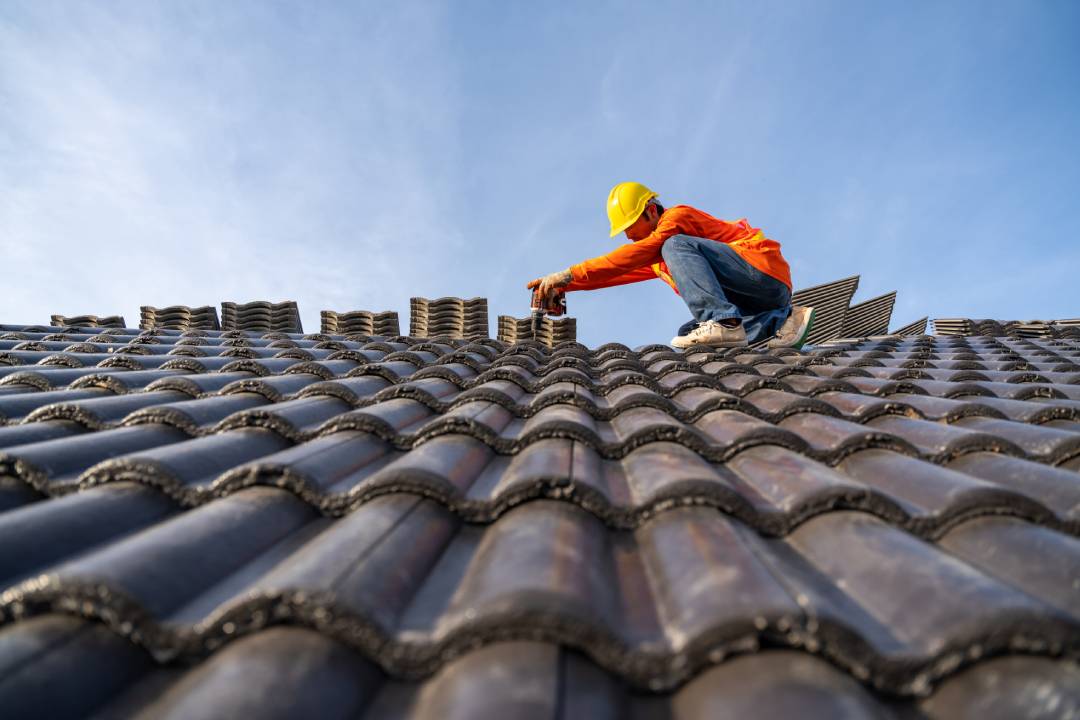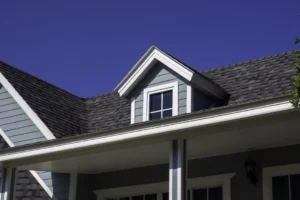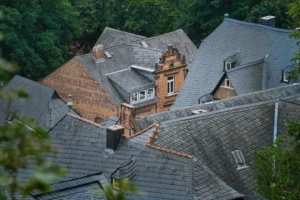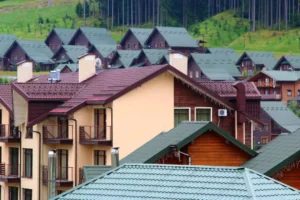Your roof is one of the most critical components of your home, providing protection from the elements and keeping you and your family safe and dry. However, over time, even the sturdiest roofs can develop issues, which can be exacerbated by harsh weather conditions and wear and tear. Regular roof inspections are essential for catching problems early, preventing costly damage, and extending the lifespan of your roof. In this blog, we’ll provide a comprehensive roof inspection checklist to help you ensure the health of your roof and safeguard the long-term integrity of your home.
Exterior Inspection
Start your roof inspection by examining the exterior components. This includes:
- Shingles: Check for missing, cracked, curled, or damaged shingles. Pay special attention to any areas where shingles appear discolored or mossy.
- Flashing: Inspect the flashing around chimneys, vents, skylights, and roof edges. Look for signs of rust, damage, or loose flashing.
- Gutters: Clean and inspect gutters for debris and clogs. Ensure that gutters are securely attached to the roof and that downspouts are clear and directing water away from the foundation.
- Soffits and Fascia: Examine the soffits (the underside of the roof overhang) and fascia (the vertical board that caps the end of rafters) for signs of damage, rot, or pests.
Interior Inspection
Proceed with an interior inspection to identify potential roof problems:
- Attic Inspection: Check the attic for signs of water leaks, such as water stains or damp insulation. Look for any visible sunlight coming through the roof boards, which can indicate holes or gaps.
- Ventilation: Ensure that the attic is well-ventilated to prevent moisture buildup, which can lead to mold and roof damage. Inspect vents, fans, and insulation for proper function.
Structural Inspection
Assess the overall structural integrity of your roof:
- Sagging: Look for any noticeable sagging or unevenness in the roof’s surface, which could indicate structural issues.
- Roof Penetrations: Examine any roof penetrations, such as vents, pipes, and chimneys, for signs of damage or deterioration.
Check for Leaks
After inspecting the exterior, interior, and structure, conduct a thorough leak check:
- Water Stains: Inspect ceilings and walls for water stains, which may indicate an ongoing leak.
- Ceiling and Attic Leaks: Check for signs of leaks in the attic or upper levels of your home. Leaks in the attic can damage insulation and lead to more significant issues.
Moss and Algae Growth
Address any moss or algae growth on the roof promptly. While these growths may not pose an immediate threat, they can trap moisture and accelerate shingle deterioration over time. Proactive removal ensures your roof remains in top condition, preventing potential damage and extending its lifespan.
Keep a detailed record of your inspection findings, including photographs and notes. Documenting the condition of your roof can help you track changes over time and provide valuable information if you need to file an insurance claim or consult with a roofing professional. This meticulous record-keeping serves as a reliable reference point for future maintenance and decision-making.
While regular DIY inspections are crucial, it’s also wise to schedule professional roof inspections at least once a year or after severe weather events. Experienced roofing professionals have the expertise and tools to identify hidden issues and perform necessary repairs. Their trained eyes can uncover problems that might go unnoticed during routine checks, ensuring the long-term durability and safety of your roof.
Conclusion
Regular roof inspections are a vital part of responsible homeownership. By following this comprehensive roof inspection checklist, you can help ensure the health and longevity of your roof. Catching and addressing issues early can save you money on repairs and prevent more extensive damage to your home. If you ever have concerns about your roof’s condition, don’t hesitate to consult with a qualified roofing professional for expert advice and assistance. Remember, a well-maintained roof is your first line of defense against the elements and an essential investment in your home’s long-term well-being.








